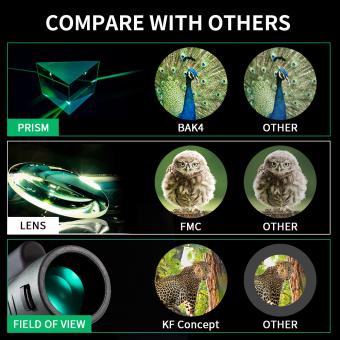How Does Monocular Double Vision Work ?
Monocular double vision, also known as monocular diplopia, occurs when a person sees two images of a single object with one eye. This can be caused by various factors, including abnormalities in the cornea, lens, or retina of the eye. These abnormalities can lead to the light entering the eye being refracted or focused incorrectly, resulting in the formation of two separate images on the retina. The brain then interprets these two images as separate, causing the perception of double vision. Monocular double vision is typically not related to problems with eye alignment or coordination, as it only affects one eye. It is important to consult with an eye care professional to determine the underlying cause of monocular double vision and to receive appropriate treatment.
1、 Binocular Vision and Stereopsis
Monocular double vision, also known as diplopia, occurs when an individual sees two images of a single object with one eye. This phenomenon is caused by a disruption in the normal functioning of the visual system. To understand how monocular double vision works, it is important to first grasp the concept of binocular vision and stereopsis.
Binocular vision refers to the ability of the eyes to work together as a team, allowing us to perceive depth and three-dimensional objects. This is achieved through a process called stereopsis, which involves the brain combining the slightly different images received from each eye to create a single, unified perception of the world.
In the case of monocular double vision, the visual system is unable to merge the images from both eyes into a single coherent image. This can occur due to various reasons, including eye muscle imbalances, corneal irregularities, or abnormalities in the retina or optic nerve. These factors can disrupt the normal alignment and coordination of the eyes, leading to the perception of two separate images.
The latest point of view on monocular double vision suggests that it can also be a result of neurological conditions, such as stroke or multiple sclerosis, which affect the brain's ability to process visual information. Additionally, certain medications, trauma to the eye or head, and even prolonged eye strain can contribute to the development of monocular double vision.
Treatment for monocular double vision depends on the underlying cause. It may involve addressing any underlying medical conditions, prescribing corrective lenses, or recommending eye exercises to improve eye muscle coordination. In some cases, surgery may be necessary to correct structural abnormalities or muscle imbalances.
In conclusion, monocular double vision occurs when the visual system is unable to merge the images from both eyes, resulting in the perception of two separate images. Understanding the mechanisms of binocular vision and the latest insights into the causes of monocular double vision can help guide appropriate treatment strategies for individuals experiencing this visual phenomenon.

2、 Monocular Depth Cues
Monocular double vision, also known as monocular diplopia, occurs when a person sees two images of a single object with one eye. This phenomenon is caused by a disruption in the normal functioning of the eye or the visual system.
Monocular double vision can be attributed to various factors, including abnormalities in the cornea, lens, or retina of the eye. These abnormalities can cause light to be refracted or focused incorrectly, resulting in the perception of two separate images. For example, a condition called astigmatism, where the cornea is irregularly shaped, can cause monocular double vision.
Another cause of monocular double vision is a condition called cataracts, where the lens of the eye becomes cloudy. This cloudiness can scatter light, leading to the perception of multiple images. Similarly, certain retinal disorders or damage to the optic nerve can also result in monocular double vision.
Monocular depth cues, on the other hand, are visual cues that help us perceive depth and distance using only one eye. These cues include relative size, texture gradient, interposition, and linear perspective. They provide information about the relative position and distance of objects in the visual field.
The latest point of view on monocular double vision suggests that it is often a symptom of an underlying eye condition or visual system dysfunction. Therefore, it is crucial to consult an eye care professional if experiencing monocular double vision to determine the cause and receive appropriate treatment.

3、 Ocular Misalignment and Diplopia
Monocular double vision, also known as diplopia, occurs when a person sees two images of a single object with one eye. This phenomenon is typically caused by ocular misalignment, where the eyes are not properly aligned to focus on the same point in space.
The most common cause of monocular double vision is a condition called strabismus, which is characterized by the misalignment of the eyes. In strabismus, one eye may turn inward, outward, upward, or downward, causing the person to see two images. This misalignment disrupts the normal binocular vision process, where both eyes work together to create a single, fused image.
The brain plays a crucial role in monocular double vision. When the eyes are misaligned, the brain receives two different images from each eye. To avoid confusion, the brain suppresses or ignores the image from the misaligned eye, resulting in the perception of a single image. However, in some cases, the brain fails to suppress the image from the misaligned eye, leading to the experience of double vision.
Recent research suggests that monocular double vision may also be influenced by sensory adaptations and neural plasticity. The brain has the ability to adapt to ocular misalignment over time, and this adaptation can affect the perception of double vision. Additionally, studies have shown that the visual cortex undergoes changes in response to ocular misalignment, which may contribute to the development and persistence of monocular double vision.
In conclusion, monocular double vision is primarily caused by ocular misalignment, such as strabismus. The brain's response to this misalignment, including sensory adaptations and neural plasticity, plays a significant role in the perception of double vision. Further research is needed to fully understand the mechanisms behind monocular double vision and to develop effective treatments for this condition.

4、 Neurological Causes of Monocular Double Vision
Monocular double vision, also known as monocular diplopia, occurs when an individual sees two images of a single object with one eye. Unlike binocular double vision, which is caused by misalignment of the eyes, monocular double vision is typically associated with neurological causes.
One of the main neurological causes of monocular double vision is a condition called astigmatism. Astigmatism occurs when the cornea or lens of the eye is irregularly shaped, causing light to be focused unevenly on the retina. This can result in distorted or blurred vision, leading to the perception of double images.
Another neurological cause of monocular double vision is a condition called keratoconus. Keratoconus is characterized by the thinning and bulging of the cornea, which can cause irregular astigmatism and double vision in one eye.
In some cases, monocular double vision can be a symptom of a more serious neurological condition, such as a brain tumor or multiple sclerosis. These conditions can affect the nerves that control eye movement and coordination, leading to double vision in one eye.
The latest point of view regarding monocular double vision suggests that it is important to consult with a healthcare professional if experiencing this symptom. They can conduct a thorough examination and determine the underlying cause of the double vision. Treatment options may include corrective lenses, medication, or surgery, depending on the specific cause and severity of the condition.
In conclusion, monocular double vision is typically caused by neurological factors such as astigmatism, keratoconus, or underlying neurological conditions. Seeking medical attention is crucial to accurately diagnose and treat the condition, ensuring optimal vision and overall health.






































